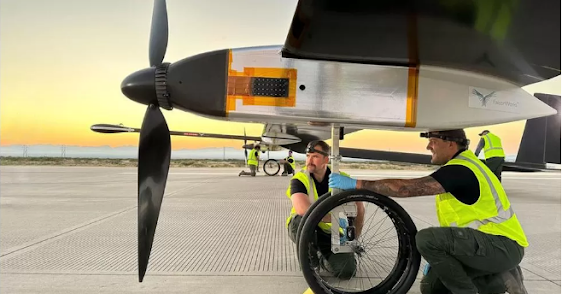The slow and delicate aircraft taking on spy missions
This weird, elongated British aircraft is powered by small electric engines attached to elongated wings encasing solar panels. These capture power during the day and keep the two engines turning at night.But there's a new entrant in the old game of keeping an eye on your strategic opponents, and this new spy is surprisingly sluggish.Phasa-35 moves so slowly it can appear to be going backwards.
Solar power is stored in packs of lithium batteries like phone batteries. Having so many batteries means some can fail during weeks of flight without any impact on endurance.The wheels it rolls on to take off are abandoned on the ground, the machine landing slowly on its two engine pods, and changing the bruised propellers after every flight. It resembles an arrow that has grown long thin wings.With a 35 metre wingspan, pencil-thin carbon fibre fuselage and 150kg all-up weight Phasa-35 looks a little flimsy.
The normally-benign climate in the South-West US gave the aircraft its best chance of climbing to 66,000ft, twice the altitude of a commercial jet, without encountering strong winds that might tip the delicate machine over and into a dive earthwards.That fragile appearance, more insect than aeroplane, is one clue as to why BAE Systems chose a US military range in New Mexico to test Phasa-35 in July this year.
Clambering to its stratospheric destination at a lazy 55 mph the machine can travel backwards in relation to the earth if it hits winds of higher velocity as it noses upwards through weather systems.One of its rivals, the Zephyr solar-powered high altitude aircraft, flew for up to 18 days during 2021 tests in Arizona.Zephyr was also built in the UK, for Airbus. But a more ambitious flight lasting 64 days ended in a crash in July 2022 due to high-altitude air turbulence.

Comments
Post a Comment